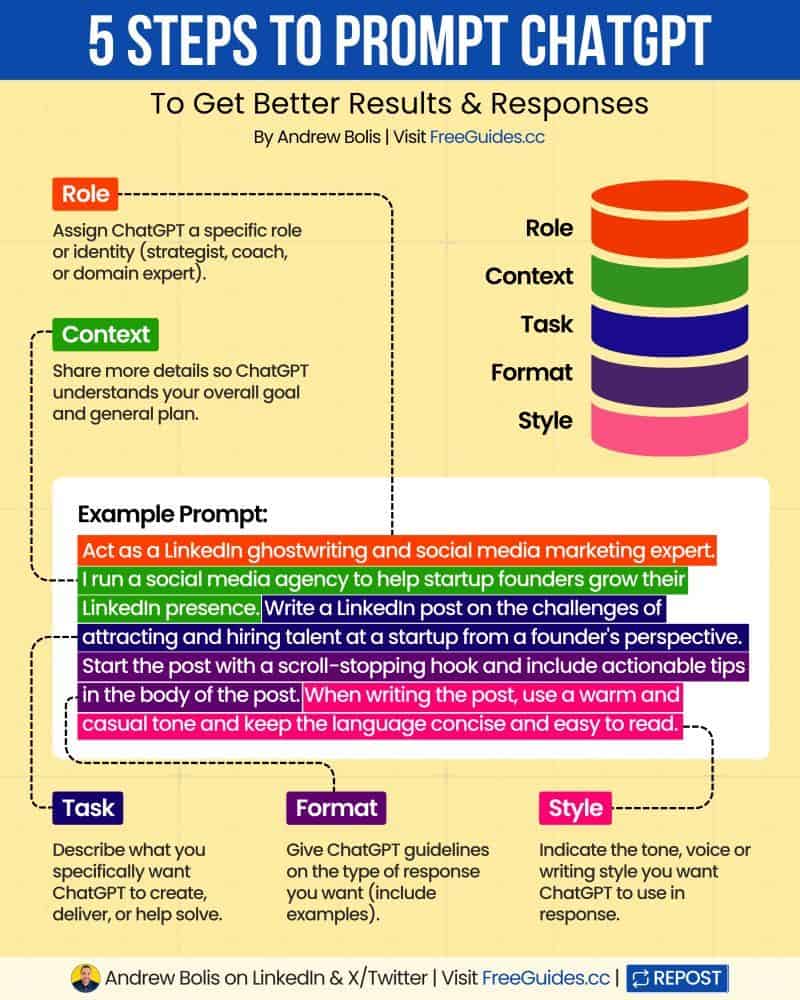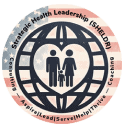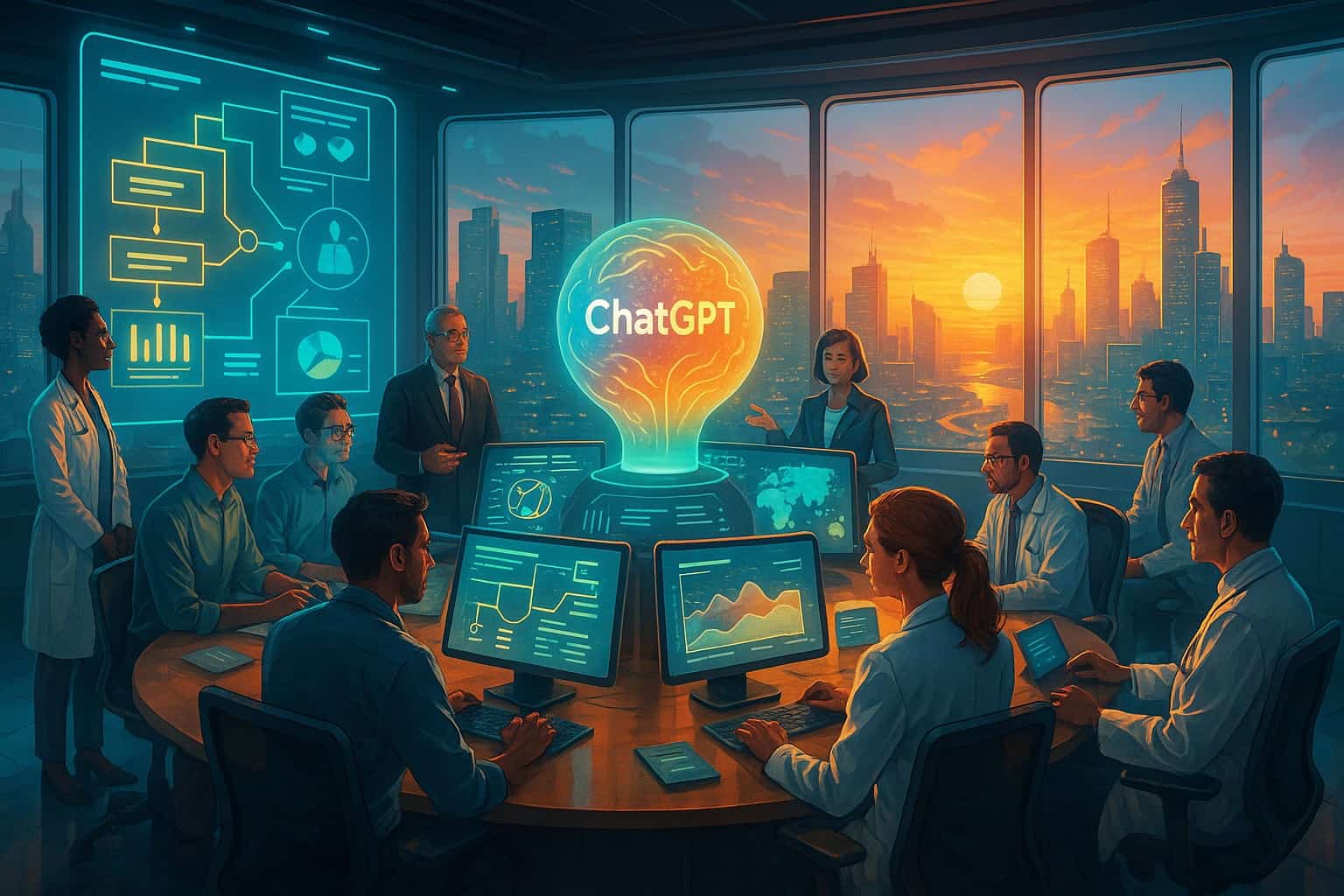Still letting sloppy prompts sabotage your strategy and budget?
Discover how a dead-simple 5-step AI-ChatGPT formula turns chaos into explicit action for upstream health leaders. Build resilient, data-driven systems that cut costs and save lives.
Executive Summary
This chapter presents a five-step ChatGPT prompting formula that saves time, refines strategy, and enables informed upstream decision-making. Using specific roles, context, tasks, format, and style, health leaders can generate fundable, data-driven documents tied directly to Make All Americans Healthier as a National Strategic Imperative (MAHANSI) and social determinants of health and health-related social needs (HRSN) (SDOH/HRSN) initiatives. It highlights a real-world example of a State-X director accelerating opioid policy. It also warns of limitations—no prompt replaces trust-building or local intelligence. Tailored for strategic-minded health leaders (SHELDR) building Integrated Accountable Community Health Systems (IACHS), this playbook enhances prompt precision, complex scenario management, and rapid iteration as core competencies. To learn more, use the links, questions, learning activities, and references.
Table of Contents
Why AI Prompting Can Make or Break MAHANSI
I see it daily. Health leaders are buried under opioid deaths, workforce shortfalls, Medicaid cliffs — then chasing ChatGPT like it’s a miracle fix, only to get half-baked fluff because they never learned to prompt it right. The outputs came out generic, full of stale Centers for Disease Control (CDC) statistics. Once she applied these five layers, she had a polished, fundable, and locally grounded plan in two days. That’s the difference between still scrambling to secure federal dollars today to build an upstream IACHS or tackling SDOH head-on.
Research shows that structured prompts can reduce analysis time by up to 40% while doubling the usable quality. Yet most teams keep slogging. That’s on us. Andrew Bolis (freeguides.cc) has dropped an infographic that breaks down AI prompting into five straightforward steps. He didn’t aim it at health leaders. I will.
Picture a State-X county health director. She burned three weeks trying to get ChatGPT to draft an opioid mitigation proposal. The outputs were generic, filled with outdated CDC statistics. Then, she applied these five layers of prompting. She had a polished, fundable, locally grounded plan in two days. That’s the difference between still scrambling and pulling federal dollars today. Want tighter systems and fewer midnight scrambles? Here’s precisely how this blunt framework breaks it all down.
5 Structured AI Prompting Steps That Fuel Upstream Wins
Bolis’s visual punches out five-layered stacks that together build a bulletproof ChatGPT prompt. He shows it with a LinkedIn ghostwriting example. Cute for marketers. But we’re strategic-minded SHELDRs, driving statewide Integrated Accountable Community Health System (IACHS) initiatives to leverage the social determinants of health (SDOH) and health-related social needs (HRSN). We’re also pushing nursing directors to redesign community triage, home health, and transitional care. Same principle. Bigger stakes. Still critical to understand prompt discipline. Here are five steps to better prompting:
- Role: Orange. Tell ChatGPT exactly who it is. Not just a generic helper. “Act as a state Medicaid transformation strategist.” “Be a rural hospital nurse staffing planner.” “Serve as a home health RN care coordinator.” The badge changes its logic instantly.
- Context: Green. Drop the local details. Your IACHS pilot may be stalled due to behavioral health referrals. Or your nurse case managers face a surge in chronic wound patients linked to food insecurity. Context ties AI to your messy reality.
- Task: Purple. Spell out precisely what you want. A staffing redeployment plan? A Diabetes Outreach Protocol for Nurse Educators? A three-tier model for risk-based home visits? Vague = garbage. Specific = gold.
- Format: Dark violet. If you want a one-pager, bullet grid, SBAR briefing for nursing rounds, or a PowerPoint for commissioners, say so. Otherwise, you’ll get a text blob every time.
- Style: Pink. Set the voice. “Professional, blunt, skip policy jargon.” Or “tight, compelling, so a charge nurse and mayor both grasp it.” Saves endless rewrites.

Let’s be straight: this five-step playbook isn’t magic. It won’t rebuild fractured cross-agency trust, modernize your Electronic Health Record (EHR) pipes, or fix turf wars that cripple upstream nursing-integrated IACHS models. It also won’t replace field intel—your SDOH and HRSN data still demand local validation. Use this as a power tool, not a shortcut to duck coalition grinding or bedside realities. And, don’t worry about being outsourced.
Blunt truth—if you’re still winging prompts like an amateur, you’re not leading an upstream strategy. You’re chasing your tail. You’re burning yourself out!
Why SHELDRs Must Master AI Now
Let’s quit pretending. If you can’t guide AI with discipline, you’ll be stuck paying consultants to do it or fixing sloppy drafts at midnight. Mastering these five layers is leadership competency now, not a tech toy. Especially if we ever want MAHA or MAHANSI to be more than conference slogans. So, here are three AI strategic competencies to grow today:
- Prompt Precision: Practice these five steps until you can perform them effortlessly. Your board decks and community health RFPs will be sharper overnight.
- Complex Scenario Feeding: Learn to pack your local policy, social, and financing mess into context fields so AI stops defaulting to generic national talking points.
- Fast Iteration: Don’t settle for first drafts. Use follow-ups to drill deeper, tighten assumptions, and stress-test scenarios.
So, what do you get out of mastering this? It’ll overhaul how you lead and deliver.
Transformative Outcomes: Real HHS ROI
This is bigger than time savings. You’re building data-driven, resilient health systems that lower per capita costs more quickly, easily, and effectively. You’re surfacing risks before they bust your budgets. You’re turning bland strategy docs into funding magnets that keep hospitals open and community health centers staffed.
The same five-layer prompt that once wrote a startup’s hiring post can be tuned to design a state’s behavioral health integration strategy or simulate SNAP-backed grocery pilots. That’s why we’re upstream leaders, building durable systems that bend the curve on both health and per capita spend. At the end of the day, this method is your edge in building systems that actually hold up under pressure.
Your Unfair Advantage in Health Strategy
The power of this infographic lies in its brutal simplicity. Name the role. Drop your local context. Get specific on the task. Nail the format. Demand the style. You’ll stop fumbling with AI and start weaponizing it for your mission. That’s how you pull your county out of crisis mode, get grant reviewers nodding, and build healthier, wealthier communities. That’s why we’re leaders in the upstream sector.
If you’re serious about driving real change, this is the line where leaders step forward or stand aside.
Seize the Prompting Edge for Systemic Impact
If you’re serious about leading MAHANSI-era change, mastering this five-step ChatGPT playbook isn’t optional—it’s urgent. You’re not just reducing wasted hours. You’re building upstream IACHS models that tackle SDOH and HRSN before they spiral into clinical crises. This method sharpens your team’s strategic precision, forces richer local context, and delivers formats leaders can act on—without consultants or midnight scrambles.
This isn’t fluff. You can craft federally fundable behavioral health integration briefs in days, not weeks. Healthcare systems model social-determinant pilots in hours, not months. But this only works if you stop feeding generic prompts and start demanding mission-aligned responses.
So, print these five layers and embed them into every policy effort, from Section 1115 waivers to Medicaid ROI decks. Bake this into your standard operating procedures (SOP). Then watch your AI outputs become strategic levers, not just clever text.
Challenging question — what upstream system shifts will you engineer once your team masters this precision? Consider the discussion questions and learning activities, then check out these articles at the Strategic Health Leadership (SHELDR) website:
Propel Yourself Upward: The New 80/20 Rule Meets ChatGPT as A Strategic Health Leader’s Game-Changer
Deep Dive Discussion Questions
- How would embedding this five-step prompt framework shift your agency’s approach to Medicaid waiver design?
- Which part of your SDOH or HRSN strategy still relies on generic AI prompts and needs a six-week overhaul?
- If you were to deploy this method across your public health teams, what funding or system-level response would change first?
- How can your organization track prompt precision improvements as measurable KPI—time saved, error reduction?
- What barriers—data, culture, turf—will block embedding these AI workflows, and how will you dismantle them?
Professional Development Activities
- Prompt Clinic Workshop: Conduct a 90-minute session where teams refine one live prompt using the five-step method and compare the resulting outcomes.
- Scenario Tabletop Drill: Pick an SDOH crisis (e.g., opioid spike) and task teams to draft grant proposals with structured prompts in 45 minutes.
- Prompt Performance Tracker: Track 5 prompts per week across units; measure time, relevance scores, and user edits to benchmark improvements.
Videos
- ChatGPT Tutorial: Must-Know Prompts for Doctors
- AI Tools for Nurses: How #ChatGPT Can Simplify Your Work
- Embracing ChatGPT in Nursing Education and Practice
- How Physicians Can Use ChatGPT and AI in Healthcare
Hashtags (5)
#AIUpstreamImpact
#HealthStrategyBoost
#PromptPowerHHS
#MAHANSIPower
#IACHSLeaders




